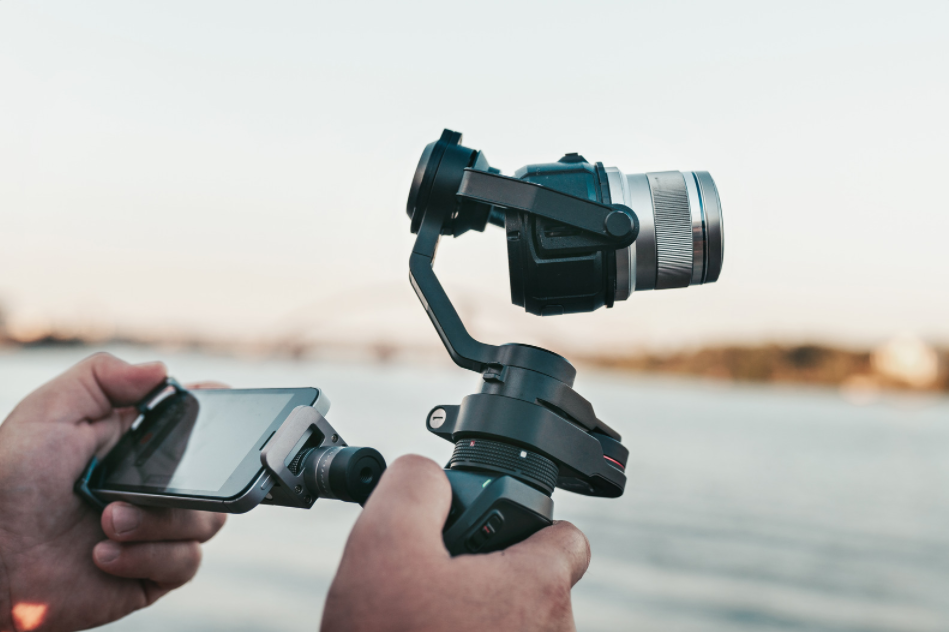
Whether you’re a hobbyist or already a professional photographer or videographer, you will need to know about the different types of camera stabilizers to take a smooth and steady shot. Camera stabilizers are lifesavers when it comes to reducing excessive takes when shooting a subject.
In the same way, when you make documentaries and footage that involves moving vehicles, objects, people, animals, and the like, to get fewer blurry photos and videos, you’ll need the help of a camera stabilizer to avoid making your audience feel nauseated.
With that in mind, we’d like you to know about the different types of camera stabilizers so that the next time you take pictures, whether it’s for a professional portfolio, a client, or just for fun, they will come out clear and crisp without a hint of blur.
Which stabilizer is best for a camera?
Different camera stabilizers work for a variety of purposes. If you don’t know which one to decide on, we’ll give you some good starters, such as the DJI RSC 2 – 3-Axis Gimbal Stabilizer, which has a good payload (weight limit) of 6.6 pounds so it will accommodate most cameras.
Since it’s about as compact as a sheet of bond paper in A5 size, it’s not too bulky to carry around (it weighs only 2.65 pounds). With up to 14 hours of runtime for each charge, this stabilizer has an OLED screen for easy camera settings control.
The DJI RSC 2 is widely compatible with most major brands and models of DSLRs and mirrorless cameras, such as the Canon EOS series, Nikon, Sony, Panasonic, and more. It also has a latency-improving technology called RavenEye for better responsiveness.
A lightweight stabilizer for those who simply want a travel photography companion is the ZHIYUN Crane M2 3-Axis Gimbal Stabilizer, which weighs only 1.1 pounds. With a total of 6 creative modes to choose from, it has a quick-release system for switching between cameras.
There’s a locking pin on the Crane M2 as well to keep your shot as steady as possible. It’s also quite compact in terms of size. Although it doesn’t have as much payload as other stabilizers, it’s a good entry-level choice for those who are starting photography.
If you want a stabilizer not just for DSLRs but also for camera phones and your GoPro and other action cameras, you’d like the Hohem All-in-1 3-Axis Gimbal Stabilizer, which is a budget-friendly choice. With a runtime of about 8 hours on a single charge, it has modes such as panorama and timelapse.
This stabilizer is suitable for those who are new to photography or simply want a clearer shot or footage of their adventures out on the islands. With a total of 6 modes for stabilizing your videos or photos, we like how this stabilizer can work for a variety of small cameras.
For videographers, you’d probably like the FLYCAM HD-3000 Handheld Video Camera Stabilizer, which can take up to 8 pounds for its payload or camera weight capacity. It has 16 weight plates for ensuring that your camera stays balanced throughout the photography or filming session.
With a quick-release plate for conveniently changing cameras on the go, it also has a micro-balanced platform to ensure your camera stays in place. It uses ball bearings for the gimbal for smooth movements. The center post requires no tools to set it up so you can find the perfect vertical angle.
Contents
What is the difference between a stabilizer and a gimbal?
Most of the time, you’ll hear these two words put together, but they can also be different. Some gimbals can also be stabilizers but a stabilizer, on its own, is also known as a Steadicam and is mostly reliant on physical skill and adjustments rather than motorized parts.
A gimbal is usually accompanied by a set of gears along with its 3 axes, which will regulate the pan, tilt, and roll of the camera. The sensors of the gears (usually ball-bearing) will help in stabilizing the camera’s shot – whether it’s a photo or a video.
On the other hand, a Steadicam or a stabilizer simply makes use of physical setups rather than a set of gears and a motorized mechanism. Stabilizers or Steadicams are typically lightweight and are suitable for traveling with reduced weight since they don’t use batteries.
Most of what we’ve mentioned above are gimbals and stabilizers in one since they can make use of the automatic and the manual way of stabilizing the camera you put into the gear. It all depends on your preferences whether you’d want something lightweight but manual or bulky yet convenient.
What is a handheld camera stabilizer?
A handheld camera stabilizer is a kind of photography or filmmaking gear that acts like a mini-tripod to your camera and minimizes the blurry shots and footage. What it does is help keep the camera as stable as possible so that you don’t get weird shots.
The camera stabilizer works by using a 3-axis gimbal, which detects the motion of the camera and stabilizes it accordingly. This camera stabilizer is very useful in the field of filmmaking and photography as it enhances the photos and videos so they look more professional.
How can I stabilize my camera without a tripod?
If you don’t have a tripod, all you need is a good setup for your camera. You can put it on any flat surface, such as leaning on a wall or top of a table, or you can use a self-timer. If it still gets blurry, that’s when you will need the help of a camera stabilizer.
To prevent blurry images and messy video shots, a handheld camera stabilizer detects motion using its 3-axis gimbal and prevents the video or photo from being blurred by stabilizing the camera’s shot.
Conclusion
Different camera stabilizers work for a variety of purposes, such as filmmaking, entry-level photography, hobbyists, and others.
We hope that through our guide above, you’ll eventually pick a camera stabilizer that will help you get a clearer and more stabilized shot or footage for your next project – whether it’s personal or for professional needs.









